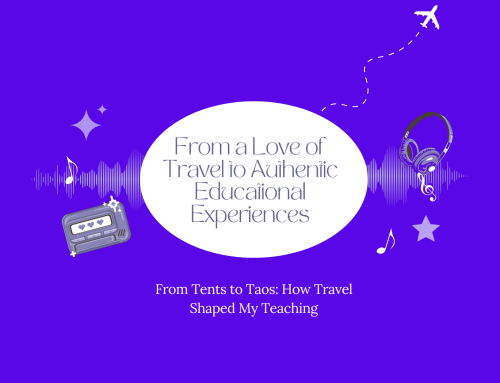For many music teachers, this was the first school year since 2019 that ended with a “normal” concert season. And, it might be the first time in a while that you’ve scratched your head and thought, “What do we do now?”
Concerts have ended. Competitions are over. And, you still have a few weeks left.
How can you engage in meaningful experiences at the end of the school year?
In this blog post, I share four ideas for engaging end-of-year activities in your ensemble classrooms.
Table of Contents
1. Create a New Tradition
In one of my first years teaching orchestra, I was stuck at the end of the year. We had completed everything I had planned, and I wanted to find a way to get my students to compose and write songs with low pressure. I ALSO wanted to find a way to honor the graduating seniors. Just like that, Senior Serenades were born!
What are Senior Serenades? These are tribute pieces created for graduating seniors to honor their time in our ensemble. Students break into small groups, interview their assigned seniors, and develop songs/tributes for them. Some groups create compositions and read a speech over them, others create original songs with slideshows, and some create remixes of popular songs by swapping out the lyrics. This has become such a mainstay of our program that the seniors start asking when the serenades will happen each spring! You can learn more about this project here and download it FOR FREE. (My colleague and I have worked on this project with students in-person and virtually.)
2. Develop Content for your Program
What are the biggest struggles students have when they come into your program? What baseline skills do they need to know? How can you connect with colleagues in your district to support each other in music education? My solution: YouTube Tutorials.
Another favorite end-of-year activity with my students is creating YouTube tutorials for our elementary and middle schools. I reach out to the teachers at those schools, learn what type of tutorials would be most beneficial, and split my students into groups. The groups then work to create a tutorial about a specific topic. We brand each video with a consistent title slide and soundtrack (we use WeVideo and share all of our content through the cloud-based platform) and upload them to a YouTube playlist associated with our school account.
Students learn through teaching, work on their video production skills, and help other kids in the district! It is a win/win for everyone. The videos range from “how-tos” on playing a popular tune to specific skills such as playing with vibrato. Check out this blog post by Steve Selfridge on creating tutorial videos for students.
3. Embrace Creativity
When I talk to ensemble directors about incorporating creative action into the ensemble classroom, the #1 piece of feedback I hear is this: “I just don’t have enough time.”
While I think it’s essential to find ways to weave creativity (through improvisation, composition, songwriting, and more) into everything we do as music educators, I understand that it can be hard when you’re used to the rhythm of rep selection, preparation, and performance! The end of the school year is a perfect time to remix your classroom and try activities that you’ve never tried before!
Matt Clauhs has some fun ideas for creating with young bands, and Joseph Sowa and Benjamin Taylor have a ton of creative ideas for older instrumental ensembles. You can check out The Creative String Orchestra for lessons and templates for improvising and composing.
And consider doing an end-of-year songwriting unit! Choral students could benefit from this workshop from Danielle Larrick. And, you could use the project ideas in Songwriting for Music Educators to have students create their own songs based on a pitch.
Let students share their creative output during the last week of school in a “Songwriter’s Circle”! They could perform compositions, songs, or other creative projects in a non-traditional space in the school.
4. Plan for Next Year
While most of us are just looking to get to the summer, it can be hard to even think about repertoire selection for the next school year. But, what if you involved students in the process?
Each spring, I spend time doing in-depth rep selection with my students. Working in groups, they pick three or four contrasting pieces and develop an imaginary concert program. In doing so, they share their rationale for choosing each piece. Then, we spend class time discussing each program and its pros and cons. We pick our top three selections from all of the programs, and I order them to sightread in the fall!
Not only do students have fun listening to samples of music, but they also develop a greater perspective of what is involved in repertoire selection. And, I always learn new things about what my students love playing!
If you want to set up a project like this, check out Choral Connections and the YouTube Project chapter. Or, develop your own rep selection guide and have students share what they intend to work on. For example, I usually provide students with a list of places to find String Orchestra music, like Rising Tide Press and J.W. Pepper, and provide guidelines on the type and level of music. Then, they get to have fun exploring and listening!
Your year-end should reflect your teaching philosophy
What is your end goal for the students in your program? For my students and me, it’s lifelong music-making. I know that lifelong music-making can be developed through musical autonomy and creativity. So, it’s helpful to find projects and experiences that align with that goal.
The end of the year can be a musical desert, or it can be a space to flourish as you explore new ways of being musical with your students.
What about you? How do you spend the final days of school?




Leave A Comment